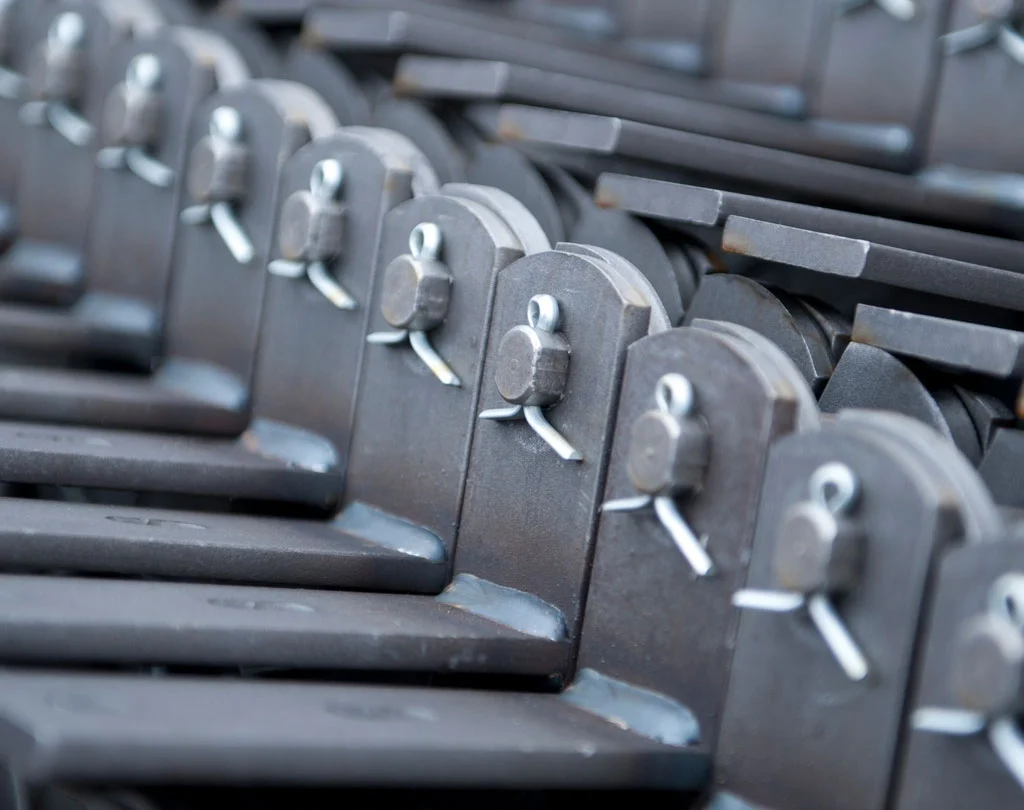How do conveyor chains work?

When deciding if a conveyor chain is right for your application, you need to understand how it works. A chain installation consists of a drive wheel, slack chain, and one or more idlers that support the chain.
The idlers, which can be toothed or smooth, rest on rollers or plates. The drive wheels push the material forward while the slack chain moves the material backward.
The conveyor chain is operated by an on/off button that rotates a motor. The motor determines the direction in which the load moves. Gears are connected to move in the same direction as the motor.
The load moves along the drive system until it reaches the last cog, which is the last gear. Some chain conveyors are unidirectional, but there are also bi-directional models.
If you want to learn how conveyor chains work, read on.
What is a conveyor chain?
A conveyor chain is a type of chain used in a conveyor system. It conveys materials from one place to another by means of rollers and plates attached to the chain. The pitch of a conveyor chain varies depending on the product being conveyed.
Lighter chains use ultra-high molecular weight polyethylene rails for abrasion resistance and lower power requirements, while heavier chains use special hardened alloy steel rails for higher load carrying capacity and longer service life.
Conveyor chains are commonly used to convey materials in industrial environments and for some applications they can be a very reliable and cost-effective solution. The main advantages of this type of chain are low maintenance, high tensile strength and easy assembly. Many different applications require different types of conveyor chains, so it’s important to find the one that best suits your needs.
The pitch of a conveyor chain is a measure of the rotational speed of the sprocket. The smaller the pitch, the faster the chain rotates, but the higher the angle of articulation, the higher the rotational speed.
The smaller the pitch, the more links are engaged during movement. On the contrary, the smaller the articulation angle, the lower the vibration and the smoother the movement. There are several international standards for conveyor chains, but the most common is the British Standard.
How do conveyor chains work?
Conveyor chains consist of a series of journal bearings joined together. The bearings contain brushes and pins that help move the chain rollers. The force generated by the journal bearings must not be excessive or the conveyor belt will break. In addition, the chain must have no torsional components. This can lead to lateral oscillation or undesirable speeds.
The main uses of conveyor systems are feeding and conveying. The former transports material from the pickup point to the discharge point. The latter, on the other hand, conveys products continuously or in batches.
The working mechanism of a conveyor chain includes a pulley system, which is an external component. The conveyor belt moves on a frame and needs support to move smoothly. The pulley system has two rotors on each unit, while more complex systems have more rotors.
The chain is supported by a drive wheel that moves in a circular motion. The drive wheel exerts a force on the chain. The force comes from friction and the load itself. A set of idler pulleys supports the chain, which may be smooth or toothed and fixed to plates or rollers. The slack supports the chain.
The chain is a bearing held together by a restraining chain plate. It contains a brush and pin on which the chain roller rotates. When the power is connected, the motor will rotate and the chain will move. As the chain moves, so does the material on it. This is how the conveyor chain works to transport the material from one place to another.